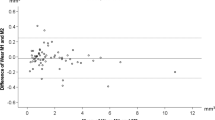Abstract
Objectives:
To analyze changes in occlusion between the ages of 8 and 65 years in persons with a deep overbite at the age of 8 who did not receive orthodontic treatment. To describe their experiences regarding their own dentition as well as their opinions on dental esthetics and oral health. To compare these findings with those of the Normal Occlusion (N-Group) described in Part 1.
Subjects and Methods:
With one exception, the 20 persons in our cohort had not undergone orthodontic therapy. Our documentation was based on intraoral photographs taken at the two time points in addition to an interview and facial photos at the age of 65.
Results:
The overbite could be evaluated in 16 persons. In four persons various degrees of mucosal indentations in connection with the overbite had been registered. The average number of missing teeth was 3.4, compared to 1.6 in the N-group. All participants reported their oral health to be good or excellent and, similar to the N-group, nearly all considered dental esthetics to be important.
Conclusion:
The overbite had decreased during the observation period in nine, increased in five, and remained stable in two persons.
Zusammenfassung
Ziel:
Die Veränderungen der Okklusion zwischen dem 9. und 65. Lebensjahr bei Personen zu untersuchen, die mit 8 Jahren einen frontal tiefen Biss hatten und kieferorthopädisch nicht behandelt wurden. Gleichzeitig sollten die Erfahrungen erfasst werden, die diese Personen in Bezug auf ihre Dentition gemacht hatten sowie ihre Ansichten zu dentaler Ästhetik und oraler Gesundheit. Die Beobachtungen sollten mit denjenigen der Referenzgruppe (N-Gruppe; Teil 1) verglichen werden.
Probanden und Methodik:
Mit einer Ausnahme waren die 20 Personen der Stichprobe kieferorthopädisch nicht behandelt worden. Die angewandte Dokumentation bestand aus intraoralen Fotos von beiden Untersuchungszeitpunkten und im Alter von 65 Jahren zusätzlich aus einem Interview und Gesichtsfotos.
Ergebnisse:
Der tiefe Biss konnte bei 16 Personen analysiert werden. Vier Personen hatten verschiedene Grade an Schleimhautläsionen im Zusammenhang mit dem tiefen Biss. Im Durchschnitt fehlten 3,4 Zähne verglichen mit 1,6 Zähnen in der N-Gruppe. Alle Befragten beurteilten ihre Mundgesundheit als gut oder ausgezeichnet und alle sahen, wie in der N-Gruppe, dentale Ästhetik als wichtig an.
Schlussfolgerung:
Der Überbiss hatte sich bei neun Personen verkleinert, bei fünf vergrößert und war bei zwei Personen stabil geblieben.
Similar content being viewed by others
Author information
Authors and Affiliations
Corresponding author
Rights and permissions
About this article
Cite this article
Berg, R.E., Stenvik, A. & Espeland, L. A 57-year Follow-up Study of Occlusion. J Orofac Orthop 69, 309–324 (2008). https://doi.org/10.1007/s00056-008-0802-x
Received:
Accepted:
Published:
Issue Date:
DOI: https://doi.org/10.1007/s00056-008-0802-x




